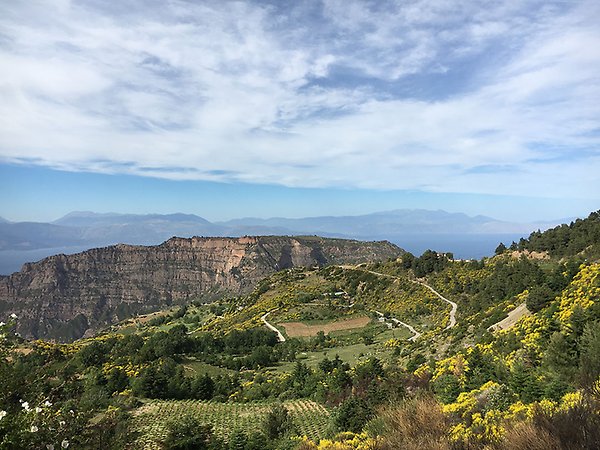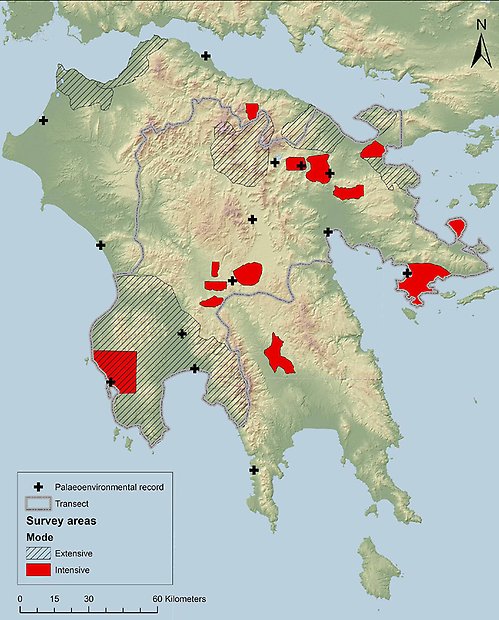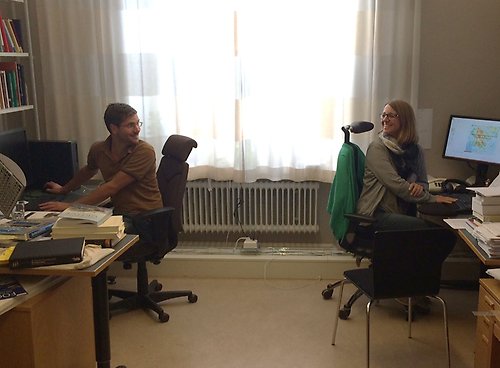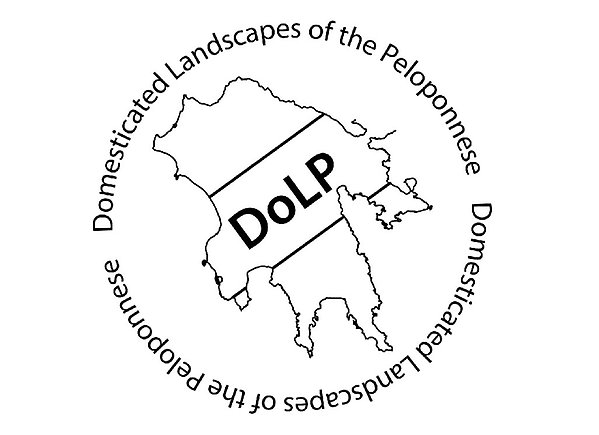Climate and Ancient Societies
Financed by Vetenskapsrådet.
Project director: Erika Weiberg

The rich archaeological and paleoenvironmental records from the Peloponnese peninsula (Greece) are investigated to provide an integrated understanding of the role of climate and climate change for Bronze Age societies (ca. 3200‒1050 BCE). These records provide information on how different societies and societal structures adapted to and utilized changing environmental conditions arising from climate change over the short-term and the long-term.
More about the project
Rainfed agriculture and an unpredictable climate made the agro-pastoral economies of Bronze Age Peloponnese (ca 3200-1050 BCE) constantly exposed to the risk of rainfall shortages. In order to understand the risk factors inherent in this system, and the capabilities of societies to deal with them, a selected variety of vulnerability indicators are analysed. The explicitly interdisciplinary project will proceed over four years and combines resilience perspectives with vulnerability assessments in a novel way using the concept of diversity as an integrative tool.
BACKGROUND
The project Climate and ancient societies in Bronze Age Peloponnese builds on and develops further the results from the previous project Domesticated Landscapes of the Peloponnese (DoLP) (2015-2020).
Main objectives
The project Climate and ancient societies in Bronze Age Peloponnese investigates how different societal structures were able, in variable ways, to adapt and utilize changing environmental conditions arising from climate change over the short-term (decadal to centennial) and the long-term (centennial to millennial). The analysis will show how the adaptive capacity varied across time, space and context, the reasons for this variability, and key mechanisms that generated resilience to climate change within social-ecological systems. In so doing, the project addresses some of the grand challenges recently set out for archaeology and historical ecology. These relate partly to interpretative issues, such as understanding human responses to climate change, the roles of social and environmental diversity and complexity in creating resilience, the correlation between biological and cultural diversity, and how their impacts vary by social scale. Other identified challenges relate to methodological issues such as how archaeological and ecological methods can be standardized for evidentiary and temporal comparability.
Analyses of these important questions require comprehensive information on past climate variability as well as the synthetization of selected parts of the archaeological records to allow integration across disciplines. The project is organized around three main objectives:
- to create new and integrated knowledge about the vulnerability and resilience of societies and societal structures to climate change across time and space by way of analysis of three source categories from the social and the environmental domain of Bronze Age Peloponnesian societies,
- to develop conceptual and cross-disciplinarily relevant instruments for evaluations of the nature and scale of variability in each specific dataset and for comparisons across disciplines,
- to expand the geographical coverage of paleoclimate datasets and to employ new methods to improve the knowledge of climate change in the Peloponnese during ancient times.
Vulnerability assessments
The linkages between vulnerability and resilience remain debated, largely due to their disciplinary pedigree and differential application history. But it is also increasingly acknowledged that the two approaches are complementary. In our project, while vulnerability assessments provide a dynamic framework for quantitative evaluations and for comparative studies based on attributes and indices, resilience perspectives provide important heuristic tools for qualitative considerations of societal features that work to decrease vulnerabilities and increase the functioning of societies in the face of climate change. The dimensions of vulnerability, combined with the main principles for building resilience will thereby provide the bases for a novel theoretical and methodological framework for the project. A key concept for the operationalisation of vulnerability and resilience in relation to Peloponnesian source categories will be the concept of diversity. As a core dimension of both resilience and vulnerability (often defined as the lack of diversity), it has an obvious role to play in assessments of the workability of societies in the face of climate change. Primary focus is on diachronic trends in three source categories: settlement, ceramic and paleoclimate data.
These trends will provide a basis for establishing indices of vulnerability (see table below), organized around the three, commonly established dimensions of vulnerability:
- the exposure to climate change: the amplitude and spatial extent of the climate variability in relation to the resources and functions present within the potentially impacted area or system,
- the sensitivity of a society: the degree to which a system is affected, directly or through feedback processes and either adversely or beneficially, by climate and climate change, and
- the adaptive capacity that enables that society to make the most of any effects of climate change: skills and strategies within a system utilized as response in a challenging situation.
Source material
The primary focus for the analysis of the three source categories will be to establish diachronic patterns (numerical sequences). These diachronic sequences thereafter allow calculations of averages to guide the establishment of relative criteria for the ranking of vulnerability assessment results. The resulting vulnerability index will be utilized as a quantitative tool to allow correlation between datasets, along with the raw data and other noted diachronic patterns. The fluctuations of the indices and the degree of correlation between them provide significant information on probable causality between factors of change and on how different societal elements contribute to the resourcefulness of humans in the face of climate change.
Settlement data is central to Peloponnesian archaeology and the region is very well supplied with archaeological field survey results amassed since the 1970. In order to address questions of resilience and vulnerability, we move beyond the point-pattern distributions commonly employed (based on field survey results) to establish potential use surfaces to go with each identified site/settlement. In combination with population density estimates derived from site numbers, and spatial analysis concerning residential mobility and site connectedness, the achieved numerical values will be a powerful tool for integration with other datasets and for the estimation of the distribution of land use and potential pressure on resources.
The most studied component of Aegean material culture is the ceramic record and the proportion and appearance of different wares, shapes and motifs can therefore provide a broad basis to explore diversity and variability over time. The use of ceramic data for assessment of trade and production infrastructure is well established. Less well-researched is the fact that the ceramic history of southern Greece develops along a sliding scale from regionalism to uniformity. Seen as expressions of social identities, fluctuations therein can be interpreted as changes in the level of cultural conformity and in the capacity for collective action . We will therefore explore the possibility of ceramic diversity as a proxy for social diversity.
In order to expand the geographical coverage of paleoclimate reconstructions this project aims to collect speleothems from two caves in the N-NE Peloponnese to add new paleoclimate data from this archaeologically rich area, and to add avriation to the existent paleoclimate record that are primarily derived from sources in central and SW Peloponnese. High-resolution information about past precipitation variability in combination with precise chronological control, is key to investigate climate stability/volatility as well as pace and rate of change, and a multi-proxy approach will significantly improve the strength of the interpretations.
Significance
The main scientific contribution of the project will be the combination of qualitative discussions with quantitative measures that will move studies on human-climate dynamics in the Mediterranean area beyond ‘collapsology’ and beyond mere chronological coincidence towards an inclusive framework for establishing causal linkages between climate variability and variability in social dynamics and human land use.The approach, methods and result will find relevance far beyond the Peloponnese and, given that the concepts and criteria used are also in contemporary use in relation to climate change, the results will provide a basis for cross-fertilization between the past, present and future.
News
News and events

Focus: Peloponnese
About our study area

Participants
Participants in the project


The current project - Climate and ancient societies in Bronze Age Peloponnese - builds on and develops further the results from the previous project Domesticated Landscapes of the Peloponnese (DoLP).
